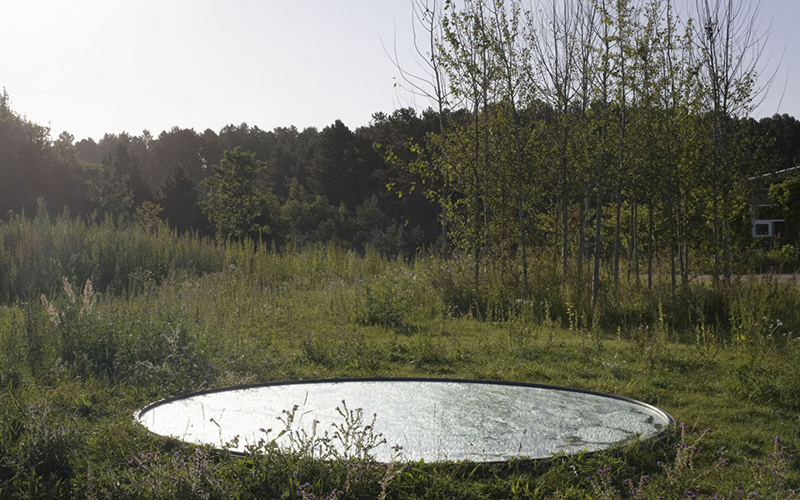Since we are both working with forms that reference vulnerability, attentiveness and containment — vessels and nests — there’s an opportunity to explore what emerges in the space between these two practices.
We can shape ideas around how to structure that collaboration, and how to reflect on it in writing or/and making. Do we need to develop a conceptual framework for this residency? Or gather inspiration from artists working with forest, fibre, and shared processes?
In the fynbos ecosystem, which itself is rich with interdependence and biodiversity, one might ask:
- How can your forms become more than objects — how might they hold conversations, tensions, or shared making between you?
- Can the residency become a kind of “weaving site” — where materials, gestures, and ideas are co-shaped in response to the land and to each other?
- Might your collaborative process itself be documented or witnessed in ways that reflect relational art principles — through sound, writing, communal workshops, or guided walks?
Starting with reflective writing will allow us to attune more closely to what is unfolding between us, the place, and the practice. I like the idea of something like: “Notes on Material Encounters”
(For documenting how certain plants, branches, or fibres are found, handled, and experienced — with an eye to their origin and condition in the landscape.
I looked at reflective writing prompts These can be written into daily or occasional journal entries, or evolved into poetic or conceptual texts. The journal becomes a shared vessel for thoughts, refusals, intuitions, and care.
1. Being With the Land
Describe your first sensory impressions of the forest and fynbos at Bodhi Khaya. What does the air carry? What is the light doing? Which sounds persist or interrupt? What kinds of materials invite your hand?
What does it feel like to “listen” to a place through your body?
- “What does it mean to make something fragile in a fragile place?”
- “How do the materials we use — especially those gathered from local ecologies — shape our attention and responsibility?”
- “How can care, rather than control, guide our decisions in this shared practice?”
2. Forms in Dialogue
I make nest-like forms, and Annette makes vessels. What happens when Annette place one of her objects next to one of mine? How do they hold space together? Does something shift when you weave into each other’s work?
What is formed between the forms?
3. Hands as Interlocutors
Reflect on how your hands move in this residency compared to how they move at home. Are there new rhythms, resistances, or responses?
Are your hands learning a new language through this collaboration?
4. Process as Offering
Rather than outcomes, consider what processes you are offering to the residency, to each other, and to the forest.
What becomes possible when you think of the work not as a finished piece, but as a shared ritual or response?
5. Unfinished Work
What is left unfinished? What questions open rather than close?
Could this “unfinishedness” be the most honest gesture of respect toward the land and each other?
6. Ecologies of Care
How are you caring for each other in the process? What small, unnoticed gestures support the work and relationship? Can the installation or final gesture include evidence of this care?
Practical making
I was thinking about a cabinet of curiosities – we could build one – in words by daily documenting the process, and physically collected objects from the site, our made stuff, written stuff
I found a book, “Landscape as a Cabinet of Curiosities, and here the author describes his perception of the landscape as a cabinet of curiosities, describing how he collects various phenomena and individual elements, relates them to each other, and reorganises them. Through his light reading, he manages to bring to the reader’s mind a whole cosmos in which the lack of integrity of nature appears as a gain rather than a loss. It is about placing myself directly in relationship with the landscape
Günther Vogt is a collector, and his cabinet of curiosities is a compendium of landscapes and his way of understanding them.

The cabinet of curiosities can look like a ‘bug house’ or bee hive – something reminding of the environment – make it with paper (Annette method) add wire for structure (karen method)
I can imagine creatures re-using our makings for their nests.
Mentors – Feedback is the breakfast of champions! We need a village of people to help us get there.
Do the work – fail and try again
Be true to yourself – embrace your identity. We all have a story to tell
Rejection is Re direction
Forced collaboration: bringing something random into the exploration process – to break that thought pattern.
More about Fynbos
The Cape fynbos is an evergreen sclerophyllous vegetation
divided into a number of ecological types by Moll et al.
(1984) which includes heathlands and shrublands. Those
found in the mediterranean zone of the south western Cape
Province, South Africa, form part of the Cape Floral Kingdom
(Good, 1974) which geographically corresponds to the Fynbos
Biome. It is the smallest of the six floral kingdoms of the
world (Takhtajan, 1969; Good, 1974) and covers only 0.04% of
the earth’s surface (Hall, 1978). Its region includes
numerous enclaves of adjacent floras: these, together with
the Fynbos Biome contain approximately 8550 species of
vascular plants which include members of seven endemic
12
families, 198 endemic genera and 6252 endemic species
(Goldblatt, 1978)